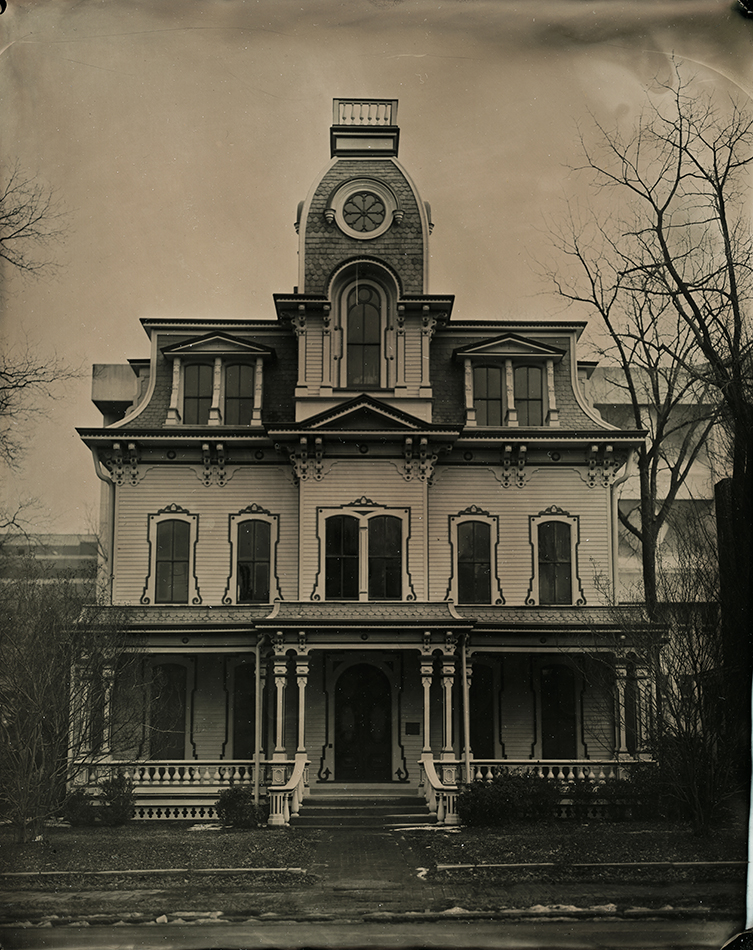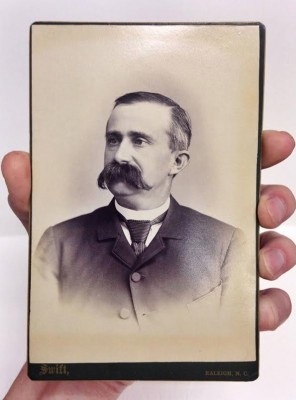The Easter Blizzard of 1915
Pictured is Morgan Street looking west at its intersection with Boylan Avenue. The large house seen on the left is roughly the same location as present-day Planned Parenthood. The house seen on the right (704 West Morgan Street) is extant, although modified. Likely sometime in the 1950s it gained asbestos siding and lost its porch. Thankfully, its Italianate eave brackets remain to this day.
Incredibly, this photograph wasn’t taken in the icy grips of winter—it was taken in spring, Easter Sunday of 1915 to be exact, after a destructive and record breaking weather event that crippled North Carolina and several other states. The front page of the News and Observer read, “Raleigh Flounesed [sic] In Grasp of Its Greatest Blizzard.†It was the deepest snow seen so late in spring and it decimated North Carolina’s electrical and communications infrastructure—toppling telegraph, telephone and power poles. The streetcars halted and the Edison bulbs dimmed as a result of high winds and wet snow falling continuously for over 17 hours. The newly formed Carolina Power and Light was the supplier of the juice and tasked with restoring service. To begin surveying the damage in Raleigh, CP&L sent employees and a photographer (possibly Cyrus P. Wharton or Manly Tyree) out to document the damage and cut live wires. They set out from the central substation at Method Road and headed east on Hillsborough Street, making photographs and surveying the destruction.
The entire series of photographs taken that day can be seen here. This photograph was the last of the series to be identified, being confirmed just last week using the 1914 Sanborn Insurance map and a healthy amount of study. In fact, there is an early historical marker in this photo. Can anyone spot it?





 Sign up for the Newsletter
Sign up for the Newsletter